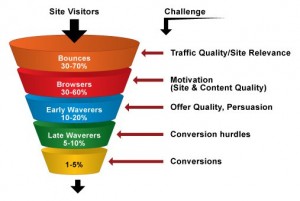Americans are working more than ever. While that shows that our workforce is dedicated and willing to put in a lot of effort for employers, this spike in workload comes at a cost: reduced productivity, health, wellness, and safety, all of which contribute to more illness, stress, injury, and decreased workplace performance. This translates into monetary losses for businesses—which one university study estimates at 150 billion dollars a year.
So how can businesses prevent productivity loss and keep their best employees safe and happy? Here are 7 ways businesses can help prevent productivity loss and improve safety. These can be implemented in many different types of industries and help solve a variety of workplace problems.
- Improve Communication and Transparency
Communication is the first step in healthy workplace culture. Many employees find themselves stressed, anxious, or frustrated simply because they don’t know what’s going on within the company. Of course, it’s impossible and impractical to keep everyone in the loop about every aspect of the business, but having transparency in every department, and offering up information on the overall progress of the company will help engage employees and establish an overall goal for everyone to work toward. Open communication has an added bonus of increased trust within an organization.
Successful businesses encourage employee innovation—and have concrete methods for incorporating those ideas. If employees feel their ideas will never become reality, they’re less likely to innovate and provide feedback to improve overall company culture and productivity. Employees at all levels are great resources for innovation because they have such in-depth knowledge about their own workflows and how company culture affects their happiness and productivity.
- Encourage Vacation & Work-Life Balance
Vacation and personal days may seem like lost productivity and revenue, but they’re actually an opportunity for keeping valuable employees’ stress levels down and preventing burnout. Encouraging employees to take their vacation days and offering perks like flex time or unconventional schedules can help reduce stress, which affects about 40% of workers on average. Stress can lead to higher healthcare costs, loss of productivity and work quality, or even lead employees to seek a different career.
- Consider Implementing Wellness Programs
Yoga classes, corporate massage, music listening opportunities, gym memberships, and other wellness programs are often seen as a frivolous waste of money, but they can actually improve emotional stability and work efficiency when they are properly implemented. Building wellness and employee engagement are two fantastic ways to increase productivity—these programs do both.
- Recognize Employees
No one likes to feel like they are working a thankless job, but many workers don’t get adequate recognition or incentive for doing an excellent job. On the spot bonuses, verbal and written praise, and benefits like 401(k) matching help employees feel valued and less stressed or frustrated at work. Retreats and fun events also fall into this category!
- Monitor Culture & Satisfaction
Employees don’t want to feel like they’re stuck—they want to experience professional and personal growth throughout their career to remain satisfied with their work. Many companies have implemented courses on leadership, stress management, and team-building courses to encourage growth and personal wellness for employees. Surveying employees on their needs instead of making assumptions about what they want is the best way to plan these ongoing training and growth programs.
- Discourage Fatigue
Many full time workers aren’t getting the sleep they need to be fully productive and safe at work. On average, Americans sleep an estimate of 6.1 hours a night, which is a full hour less than the 1970s average. Thirty percent don’t even make it to six hours. Fatigue isn’t just caused by lack of time to sleep—insomnia and other sleep problems play a role as well, costing an estimated $ 15 to $ 92 billion a year due to increased illness and lost productivity. Injuries in the workplace are also often tied to worker fatigue. While companies can’t follow their workers around and encourage them to get a good night’s sleep, there are ways to help reduce fatigue in the workplace, including:
- Limiting working hours (no more than 12 per day or 45-50 per week)
- Offering flexible schedules to help workers who thrive on a different sleep schedule
- Discouraging additional work at home when possible
- Creating a cultural emphasis on sleep and wellness
- Set Realistic Goals for Employees
Tying back into our first tip, setting realistic standards and expectations for employees accomplishes two goals: first, it helps prevent stress and burnout by allowing employees to meet their goals, and it increases transparency and fairness for all workers in an organization. Having established standards helps avoid real or perceived favoritism, allows for more constructive critical feedback for employees who aren’t performing up to expectations, and gives employees success benchmarks that can be celebrated.
Impacting the Bottom Line—Positively
Employee turnover and lost productivity are a huge waste of money for businesses, and implementing positive changes in the workplace can help retain talent and keep that talent producing high quality work. Investing in wellness and stress reduction may seem expensive—but it’s a worthwhile investment that’s paying off for businesses all over the country.
Business & Finance Articles on Business 2 Community(76)
Report Post








